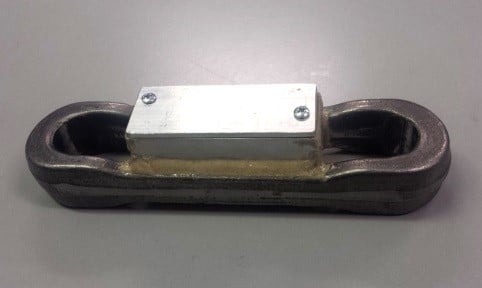Strain Gauge Link

Design Systems, Inc. proudly introduces an additional offering to its growing list of Conveyor Health Assessment services. The tension of the chain can be measured through the length of the conveyor with a Strain Gauge Link.
Strain Gauge Link Benefits:
- Maximum tension in chain and location of the tension
- Compare real tension data to theoretical Chain Pull results to avoid adding unnecessary drives
- Chain Pull at each drive for the current load condition
- Rolling friction of chain to verify lubrication effectiveness
- Air pressure needed at take-up to give minimum system tension
- Pulsing of chain tension from engagement with the drive’s cat chain
- Link can be shipped, installed and removed by plant personnel, then returned for data processing, to limit engineering time in the field
- Results presented on a graph of tension vs length of conveyor
Temperature limit is 170°F due to battery limitations. Higher temperature applications are possible with the data logger in an insulated enclosure attached to the chain.
Other Possible Configurations:
Drive Monitor
A Strain Gauge Link will show the difference in tension before and after it passes a drive. A drive monitor sensor will show the Chain Pull at the drive for varying load conditions that occur during the day. Results are presented on a graph of Chain Pull vs. time to determine maximum pull of the drive.
Carrier Rolling Friction
A tension sensor can be used to measure individual carrier pull by temporarily attaching to the preceding carrier. This will give actual rolling friction for the carrier wheels to use in Chain Pull analysis, instead of a theoretical value.
Custom Installations
Strain Gauges can also be added to the framework of a conveyor turn that is at the lowest tension in the system. When the loads vary, the take-up air pressure can be adjusted with feedback from the gauges to keep chain at the lowest tension which reduces wear.
“BOTTOM-LINE” RESULTS:
- Tension Monitoring
- Performance Visualization
- Minimized Downtime
- Cost Saving Opportunities